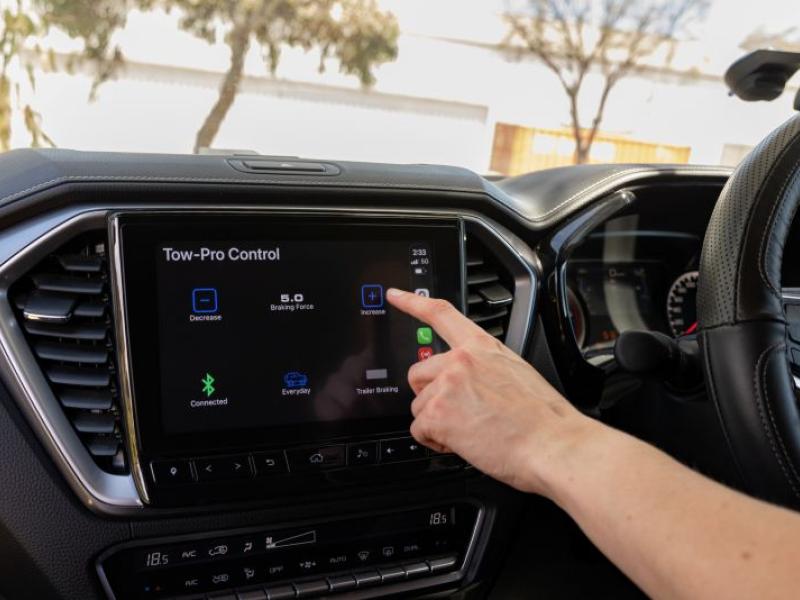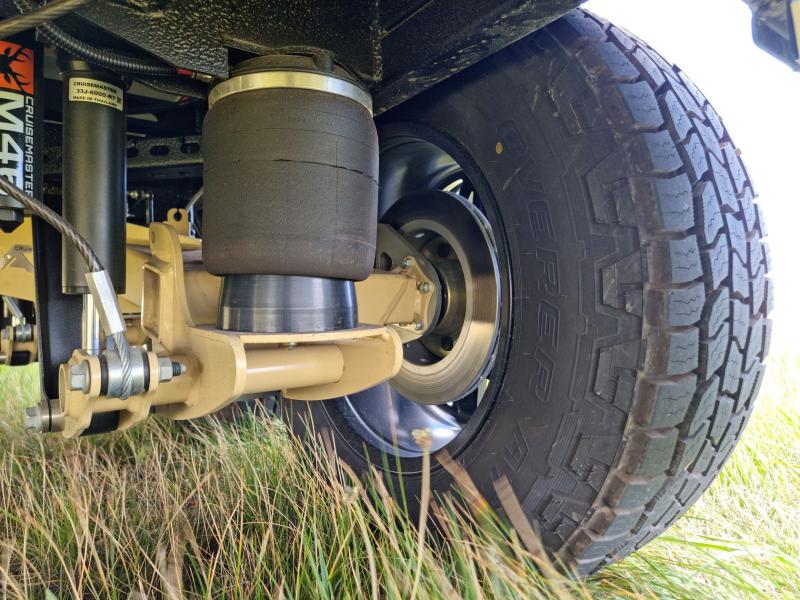Toyota’s FJ cruiser is a very comfortable and capable 4WD tourer. Particularly with some well-chosen upgrades and accessories. Gary Cooper has the story
Having grown up in Canterbury and regularly sitting in the back of Series 2 Land Rovers and the original Toyota FJ’s going on family camping and fishing trips to places like Lake Summer, it is fair to say that I caught the 4WD touring bug early in life.
So when the retro FJ cruiser was made available in right hand drive I had to have one (It also helped that we were living in Sydney at the time and my company offered flexibility in what was deemed a work required company car!)
So why did I go for the FJ?
I wanted a midsized 4WD that was very reliable (think driving across the Australian outback), a very comfortable long distance tourer and one which as well as being user-friendly enough to be my daily drive in the big smoke was a genuinely capable 4WD on the tracks.
The good bits
Summarised, the good bits for me were;
- The fact that the FJ Cruiser is built on the Prado platform and shares the same 4.0L V6 which is good for 200KW and 380Nm so it has plenty of power when required or for playing!
- It has a solid rear axle with coils so articulation in the rear is very good and independent front suspension (double wishbone with coilovers)
- It comes complete with A-Trac (Off Road Traction Control) which is the ability to sense different levels of traction and to apply the brakes to any wheel that is spinning which effectively shifts power to the wheel(s) that have traction. This works great but you also need to turn it off when you want wheel spin for example if you are driving on sand or are trying to clear mud clogged tyres
- Very short overhangs compared to most new 4WDs mean that the FJ makes easy work of steep inclines or drop-offs
- No carpet! It has vinyl floors that are washable and very easy to clean afterwards
- It has a rear differential lock (electronic) which locks the rear wheels together meaning there is constant drive delivered to each wheel even if the opposite wheel is completely off the ground
- Quick release rear seat bottoms which are designed to be simple to remove so we regularly pull ours out for extra storage when touring
- Finally I love the retro look and the suicide doors which suit a tourer set up for two people as it’s easy to access gear stored behind the front seats
And the not so (good!)
The bad bits for me were the fact that;
- There was no diesel option
- Blind spots and poor rear visibility mean you really rely on the rear vision camera sometimes
But that, really, was it. So I bought - and still own and love – one.
Outside mods (so far)
With so much good after-market product available for the FJ there was no way mine was going to remain standard.
Outside mods so far include;
- Old Man Emu 2inch Suspension lift (new coils and shocks)
- ARB Front Bar with upgraded LED park/indicators and LED fog/running lights
- ARB rear bar
- Rated front and rear recovery points
- Full ARB Underbody Protection to rear of transmission
- Toyota fitted Rock Sliders
- 9000kg Warn winch – running synthetic rope
- IPF driving lights (1 x spot and 1 x flood)
- Snorkel
- Rear Diff breather – which joins the factory front diff and transmission breathers into the engine bay
- Long Ranger second fuel tank which holds another 84L with a three mm steel heavy-duty skid plate which brings total fuel capacity to 159 litres
- 1 x set of Factory rims running 285/70/17 BF Goodrich Mud Tyres
- 1 x set factory rims running 265/70/17 BF Goodrich All Terrain Tyres
- Twin rear LED reversing/camp lights mounted onto rear door so the flood light is directional when camping
- Rhino Roof Racks with mesh roof basket (with the same size water-and-dust-proof storage bag to make loading camping gear on the roof easy)
- Fox wing awning (right-hand- side mounted to allow for the FJ rear door)
Dual Battery system
I have also set up a dual battery system which is slightly different to your average everyday one due to space restrictions under the bonnet and wanting a solution to suit my budget.
I have an 85 amp/hour deep cycle house battery fitted into the standard battery mounts which runs everything in the car and can actually be drained completely flat if demand requires.
The second battery is a large racing car battery which just fits on the other side of the engine bay (This battery is about half the size of a standard battery). This smaller battery avoids the need to relocate anything in order to install it and is also considerably lighter so doesn’t require a custom mounted battery tray. These are both charged by the factory alternator via a quality VSR (Voltage Sensitive Relay), and, in the event of the house battery flattening I can be confident that my spare start battery is fully charged and can be engaged by pushing a dash mounted toggle switch.
Inside mods
Inside modifications, again thus far, include;
- all Interior lights have been changed to LED bulbs to reduce battery drain
- There are now four rear 12v sockets (two are permanently live to power the fridge and camp lights)
- Compact (behind dash) 80 channel UHF radio with long range extender aerial and two portable handheld units
- Dash-mounted Winch Master to isolate winch and winch operation toggle switch
- Dash mounted LED fuel gauge for second tank and transfer pump switch
- Electric brake controller unit for towing the boat which is fitted with electric brakes due to its weight
- FJ specific seat covers
I’m currently happy with the set up, but I still always check out the other FJs on the tracks to get ideas for improvements.
More importantly this FJ is definitely used for what’s it was made for and we are having a ball exploring New Zealand in it.
In the words of Hunting & Fishing – we are ‘out there doing it!’
To read every story in the September 2017 issue of NZ4WD go to Zinio.com (August 18) or purchase your own hard copy at the Adrenalin store.







